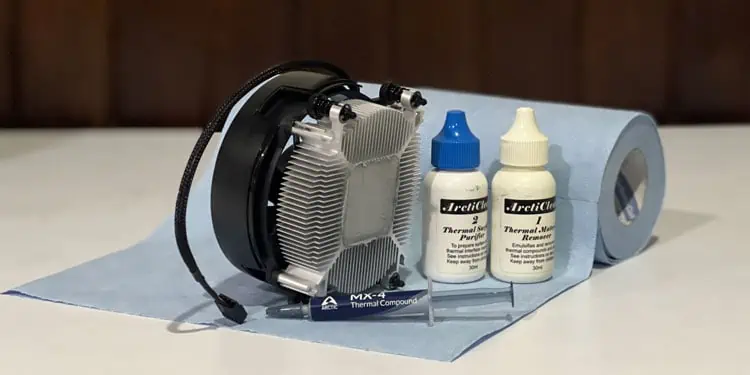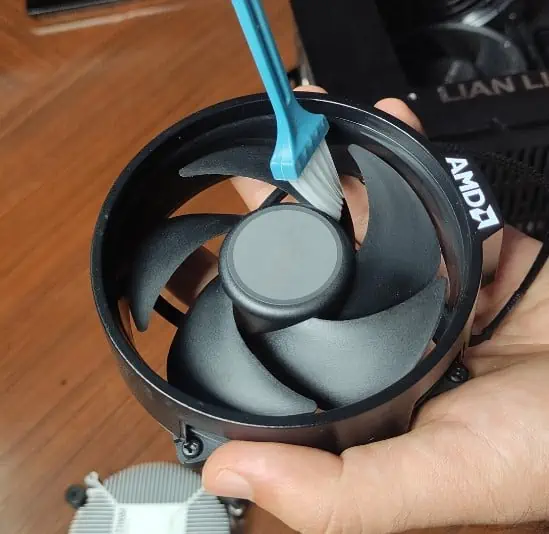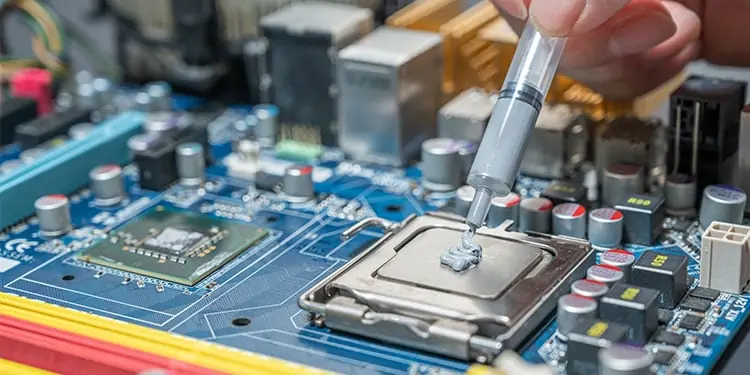A heatsink is an essential component of your PC’s thermal management. You might be cleaning your PC regularly with a can of compressed air every once in a while, but if you have ignored the heatsink for too long, dust and dirt can build up inside the fins which are not accessible normally.
If there is too much dust and dirt build-up, your heatsink will not be able to dissipate heat normally. Your CPU will start to thermally throttle. Your games will lose fps, sudden unpredictable stutters will occur, and in some cases, your PC might crash suddenly.
To avoid these problems, you need to clean your heatsink periodically. But since it’s a CPU-attached component, you might not know how. That is why, we have written this article for you so that you can clean your heatsink properly.
Things to Consider Before Starting
- Set up the cleaning area outside your house.
- Wear a mask since some dust particles could be very fine and accidentally inhaling a large quantity is not good for lungs.
- It is also advisable to wear gloves and safety goggles.
Cleaning the Heatsink
Cleaning the heatsink is a multi-step process. You will first remove the heatsink, clean it’s components individually and thoroughly, re-apply the thermal paste, then reinstall the heatsink. Here are detailed steps for each process involved:
Remove the Heatsink
- Power off the computer and lay it flat on its side.
- Open the side panel.
- Discharge the static electricity from yourself, use an anti-static wrist band.
- Disconnect the CPU fan header from the motherboard.

- For Intel CPUS, grab a flat-blade screwdriver, and use it to rotate the pins counterclockwise by 90 degrees.
- For AMD CPUs, use the flat-blade screwdriver to unscrew the four screws connecting the heatsink to the backplate.

- Hold the heatsink the entire time as it can fall out or slide on its own once it is unscrewed.
- Remove the cooler.
Remove the Fan From the Heatsink
- Loosen the screws connecting the fan to the heatsink and it will come apart.

- Some heatsinks might have fans attached by clips, in which case you can turn and pull on each clip to loosen the grip.
Clean the Heatsink
If you clean and maintain your PC regularly, including the heatsink, then there will not be much dirt build-up. However, if the last time you cleaned it has been a while, there can be a thick layer of dirt on top of the heatsink, on the fan, as well as on the inside edges of the heatsink.
- For regular cleaning, you might be able to get away using compressed air to blow the dirt away. Spray the compressed air from multiple angles and do it in quick short bursts so as to avoid damage to the CPU fan and other delicate components.
- If your heatsink has a thick layer of dirt built-up all around as well as inside the fins, then you can clean it by putting just the aluminum block under a tap of running water. Make sure to detach fans and other electrical components first. Use a brush to scrub gently if needed. When the heatsink is sufficiently cleaned, let it dry for a while.

- If it’s been a while since you last cleaned the heatsink, it is possible that in addition to dirt build-up, you might also find sticky gunk-like substances lining the heatsink. In such a case, you will need to clean the heatsink (just the aluminum block, remove fans and electricals first) with soap water.
- Inspect the inside of the fins to make sure that they are cleaned thoroughly. If there is still some dirt left over, grab some q-tips, douse their cotton ends in isopropyl alcohol, and push them inside the fins to clean the residual dirt.
Clean the CPU Fan
- Brush the dust away from the fan gently.

- Brush both sides of the fan blades and the housing. Make sure you are not using too much force when cleaning the fan blades.
- Thereafter, use a clean cloth soaked with isopropyl alcohol (rubbing alcohol, 70% solution) to wipe the blades. Do this one blade at a time, front and back.
- Also, wipe the fan housing and the cable up to the fan header.
- Let it dry for some time.
Reapply Thermal Paste
Make sure that the heatsink is thoroughly dry. Then, reassemble the heatsink and prepare thermal paste for application. If you are using a cooler for Intel CPU, first make sure to reset the four pins by rotating them 90 degrees clockwise.
- Remove old thermal paste from the CPU IHS by rubbing it with a clean cloth soaked in 90% isopropyl alcohol.

- Make sure that the surface is smooth and devoid of any residual thermal paste.
- Repeat this process for the base of the heatsink which comes in contact with the IHS.
- Apply thermal paste the size of a pea grain with the help of a syringe on top of the IHS.

- Install the heatsink on top of the CPU. Make sure that the base of the cooler sits right on top of the IHS and apply gentle but firm pressure to press it down to the CPU.
- Install the heatsink onto the motherboard. Secure the screws in place by either pushing down on the pins or screwing them in, in a diagonal pattern.
You’re done! You’ve successfully cleaned the heatsink properly, and all your PC now needs is to close back the back panel and power it back on. Please enjoy improved performance with your








